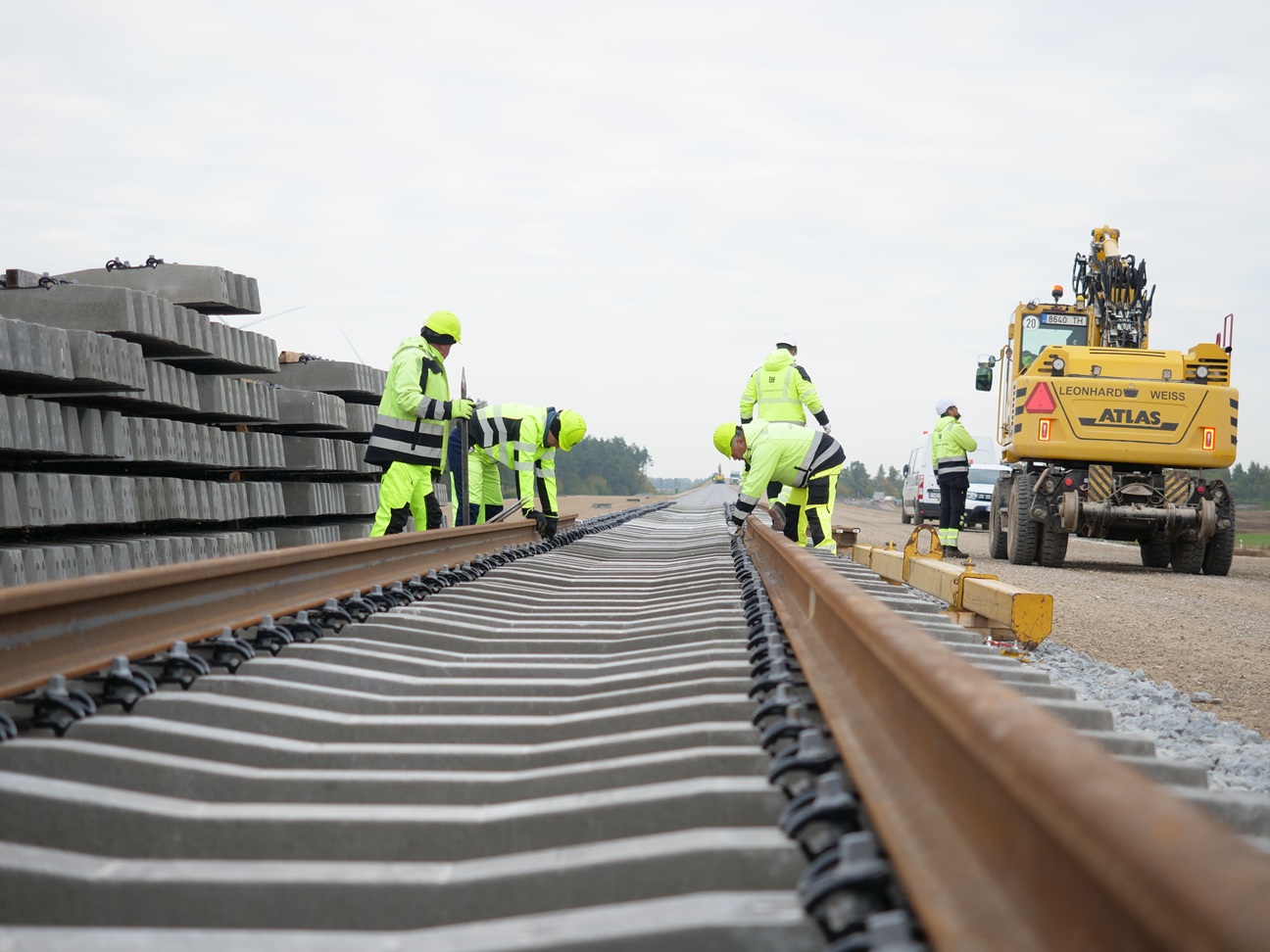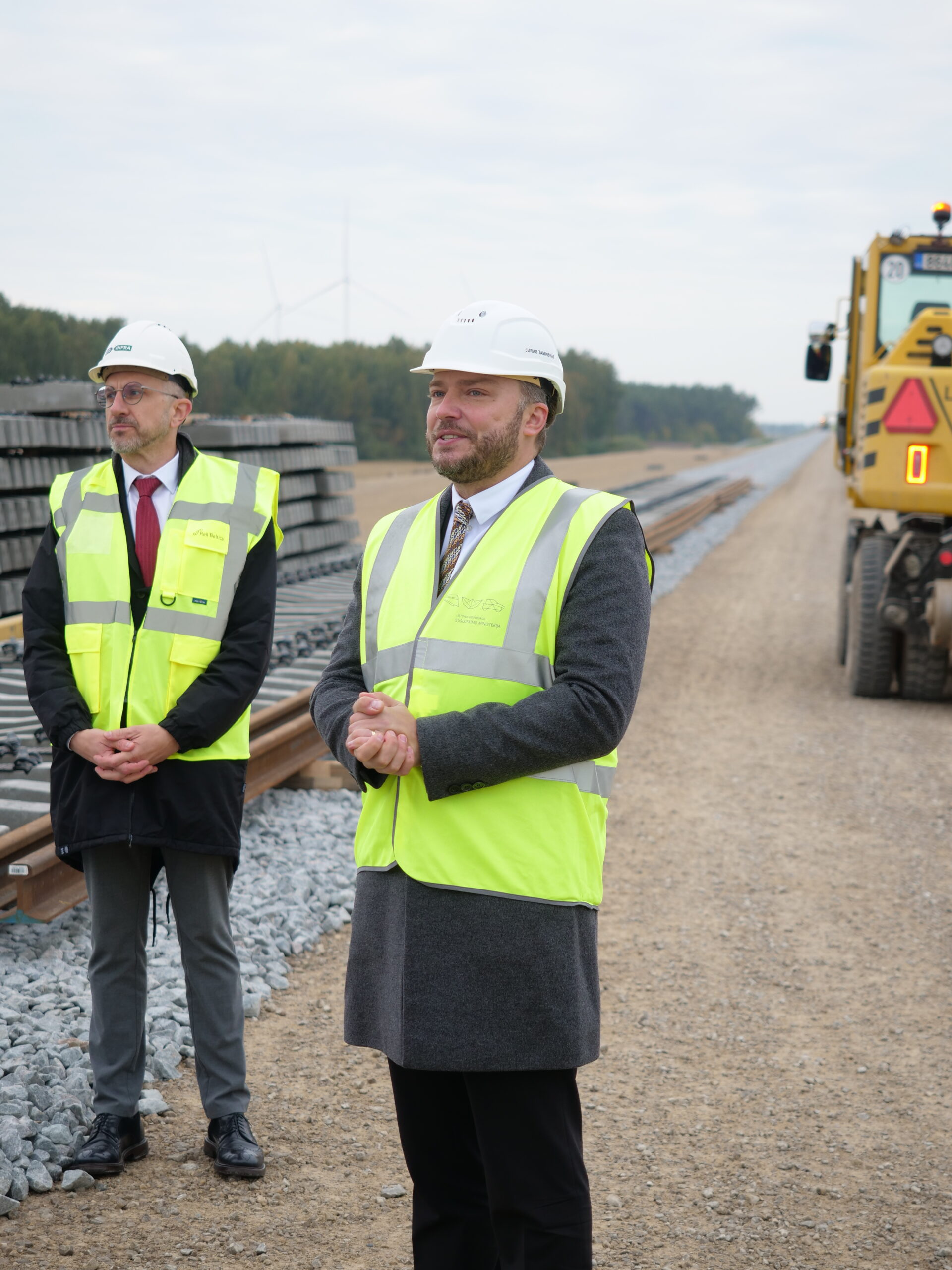Track laying has officially begun on the Rail Baltica section in the Jonava district, marking a major milestone in the development of the European standard gauge (1435 mm) railway in Lithuania. This phase of construction is one of the most visible indicators of progress, with 8.8 km of track between Šveicarija and Žeimiai scheduled for completion by the end of this year.
“Railway construction is moving from planning to actual work – from vision to laying tracks. Rail Baltica is not only a modern transport project, but also a guarantee of security for the entire Baltic region. Every European railway track will strengthen the security of our country and the eastern border of the European Union, ensuring that the people of Lithuania have fast and convenient connections to Western Europe,” – says Juras Taminskas, Minister of Transport and Communications of Lithuania.
The rails, each measuring 25 meters in length, will be joined and aligned using advanced technology to meet international standards. To support this work, national project implementer in Lithuania, LTG Infra has procured 86,200 tons of ballast, 29,500 reinforced concrete sleepers, and 42 kilometers of rails. “Territorial planning, design, and preparation take up a significant portion of the project timeline. However, construction – especially track laying – is a fast-moving phase. Our priority now is to maintain the momentum we achieved last year and continue progressing at pace,” said Egidijus Lazauskas, CEO of LTG Group.
“Every euro invested generates at least two euros in return for the state. It’s a sustainable investment in the economy, delivering long-term benefits not only to society, but also to employment, tourism, and various business sectors,” said Vytis Žalimas, CEO of LTG Infra. “We are pleased with the progress made by contractors and subcontractors across the entire 77 km construction section—these developments are becoming increasingly visible.”
The contract for the installation of the upper track structure on the Šveicarija–Žeimiai section was awarded to a joint venture between Leonhard Weiss GmbH & Co. KG (Germany) and Leonhard Weiss OÜ (Estonia). The contract value is EUR 13.9 million (excluding VAT). Following the completion of track construction, the high-speed railway will be electrified. In September, the three Baltic States and joint venture RB Rail AS signed the largest electrification contract in the region with COBELEC Rail Baltica, valued at EUR 1.77 billion (excluding VAT).
Rail Baltica progress today
Rail Baltica has entered full-scale construction across Estonia, Latvia, and Lithuania, with mainline works, international stations, bridges, and crossings advancing.
In Estonia, construction is underway on 105 km of substructure and related infrastructure, including overpasses, crossings, and traffic junctions. Contracts have been signed for 200 km of substructure and superstructure construction. More than 100 km of railway substructure is currently being built, including works at the flagship Ülemiste Terminal.
In Latvia, Rail Baltica’s mainline construction is advancing with priority given to the southern section near Iecava – a key stretch connecting Riga to the Lithuanian border. This area marks one of the most active construction zones, where large-scale earthworks, road crossings, and engineering structures are taking shape as part of the 202 km of Rail Baltica infrastructure being built across the country.
In Lithuania, construction is progressing on the Kaunas–Panevėžys section, where 77 km of embankments and engineering structures are currently under development. By the end of 2025, works are expected to extend over 114 km, including track laying and the construction of a new bridge over the Neris River, which will be the longest in the country.
By the end of 2025, 43% of the Rail Baltica mainline will be construction-ready, marking a decisive leap toward Europe’s most ambitious cross-border rail project.

